ALL OF MY POST WHERE NOT ON APRIL 17 THERE SEEMS TO BE A GLITCH AND I CAN FIGURE IT OUT SO JUST DISREGARD THE DATES PRIOR TO THIS POST.
by D.DELGADO
I'M A JAY-Z FAN AND THIS HAS TO BE THE BEST COMMERCIAL EVER, HE RECREATES ALL TEN OF HIS ALBUM COVERS. HE DOES IT AGAIN SOMETHING NEW ON THE TABLE.
by D.DELGADO
She Farted And Created The World from Scott Coello on Vimeo.
SCRIBE MUNDO DE PAPEL from ladies on Vimeo.
by D.DELGADO
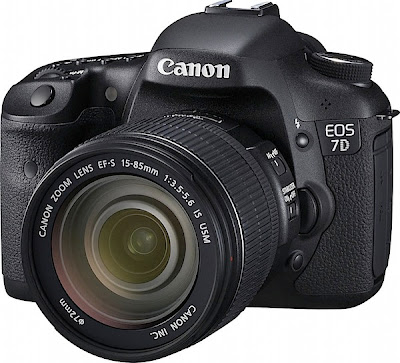

Canon have today announced the Canon EOS 7D - a widely rumored camera that has caused a lot of discussion around the web in the past few weeks as pictures of it began to surface.
The Canon EOS 7D is being presented as a new model line for Canon - not an update of another camera in the range it’s certainly above the Canon EOS 50D in terms of features but seems to be positioned alongside the Canon EOS 5D Mark II.
The Canon EOS 7D has an 18 megapixel APS-C CMOS image sensor, has dual DIGIC 4 processors and shoots at up to 8 frames per second (for up to 15 RAW or 126 JPEG images), has an ISO range of 100-6400 (and up to 12800 in custom functions), new 63 zone dual layer color sensitive metering and a new phase detection auto focus sensor with 19 f/5.6 sensors and 1 X-type f.2.8 sensor in the center of the frame.
The EOS 7D comes with a popup flash which can be used to control other wireless flashes, PC sync connector and hot shoe. It has a 3.0 inch LCD display and shoots Full HD videos.
The Canon EOS 7D will be available in September 2009 and will have a recommended retail price of $1700 USD (body only). It is already available for Pre-Order on Amazon.
Canon EOS 7D News Release
Canon U.S.A. Redefines Mid-Range DSLR Category With The New EOS 7D Digital SLR Camera
The EOS 7D Features Fast Eight fps Continuous Shooting, Class-Leading 18-Megapixel Resolution and Full HD Video Recording with Variable Frame Rates and Manual Exposure Control
LAKE SUCCESS, N.Y., September 1, 2009 – Canon U.S.A., Inc., a leader in digital imaging, today introduced a revolutionary camera that redefines the highly competitive mid-range DSLR product category: the Canon EOS 7D Digital SLR camera. Professional photographers and advanced amateurs have been demanding higher performance and more diverse functions in their cameras, and Canon has answered – with the new EOS 7D. Far more than a slight improvement from a previous model, the EOS 7D DSLR is a brand new product that stands on its own with new features never before seen in any Canon camera. Whether it’s shooting at eight frames per second (fps), focusing with the new Zone AF mode or recording 24p Full HD video, the EOS 7D DSLR camera satisfies the most rigorous professional requirements with durability, flexibility, high-resolution images and customizable controls. With its unprecedented out-of-the-box performance and high-end feature set, the EOS 7D is poised as the ultimate step-up camera for serious photographers or a second camera for professionals in the field.
The EOS 7D boasts significant EOS advancements including a completely new 19-point Autofocus system, a new Canon iFCL Metering System (Intelligent Focus, Color, Luminance) and a new Intelligent Viewfinder. An 18-megapixel Canon CMOS sensor and Dual DIGIC 4 Imaging Processors fuel the EOS 7D’s 14-bit A/D data conversion and its ability to freeze fast motion in high-resolution with eight fps continuous shooting up to 126 Large JPEGS using a UDMA CF card, positioning this camera for the studio as well as the sideline. The EOS 7D captures beautiful low-light images with or without a flash, at occasions such as a dance recital or wedding reception, thanks to a wide range of ISO speed settings from 100-6400 (expandable to 12,800). In addition to its new still capture capabilities, the EOS 7D features Full HD video capture at 1920 x 1080 resolution with selectable frame rates of 24p, 25p or 30p. Native 24p recording helps videographers achieve a more cinema-style look for their footage without the need for post-processing.
“The EOS 7D represents a completely new chapter in digital photography and Canon product development. This camera stands alone as the most functional and innovative DSLR Canon has released to-date, bringing together all of the best professional features offered, along with numerous user requests at a price-point everyone can appreciate,” stated Yuichi Ishizuka, senior vice president and general manager, Consumer Imaging Group, Canon U.S.A.
The Evolution of Vision, the EOS 7D’s New Autofocus System
The Canon EOS 7D boasts the most advanced AF system ever seen in an EOS SLR. The completely re-designed system includes a new multi-axis cross-type 19-point AF grid, where the focusing points are evenly spread out across the image plane and clearly displayed through Canon’s new Intelligent Viewfinder. All 19 points are f/5.6-sensitive for both horizontal and vertical cross-type focusing, while the center AF point adds high-precision diagonal cross-type sensitivity for f/2.8 and larger aperture lenses. The Canon EOS 7D Digital SLR camera is the first EOS SLR to feature 19 cross-type focusing points that remain fully functional with maximum apertures as small as f/5.6, which brings the performance of the AF system to unprecedented levels for assignments as varied as fast-moving sports action or low-light wedding ceremonies.
The Canon EOS 7D’s AF system allows numerous AF area selection modes never seen before in an EOS SLR camera. New modes include:
* Spot AF mode reduces the size of a single AF point to focus on small subjects like an animal in a cage.
* AF Point Expansion mode uses a cluster of AF points adjacent to the selected AF point to automatically assist focusing on moving subjects, such as an athlete on the run.
* Zone AF divides the 19 AF points into five selectable focusing zones and makes it easier to achieve focus with subjects that are difficult to track with Single Point AF or AF point expansion, such as birds in flight.
Additional AF improvements include a revised Automatic AF point selection sequence that allows a user to pick any one of the 19 AF points as a starting point for tracking moving subjects in AI Servo mode. (Previous EOS models required the subject to first be acquired by the center focusing point.) If the subject moves away, the camera will continue to track the movement with the remaining points and display the active focusing point in the viewfinder. Also, a time-saving feature is AF Point Switching, which allows photographers to select and register one AF point for horizontal compositions and a second AF point for vertical shooting, ideal for studio and portrait photographers.
To complement the new AF system, the exposure metering system for the EOS 7D has been completely re-designed to take color information into account, another first for an EOS system. Canon’s iFCL metering includes a 63-zone dual-layer metering sensor that reads both illumination and color for consistent results in all lighting conditions, keeping exposure levels stable from shot to shot, even as the light source changes.
Canon’s new Intelligent Viewfinder uses a liquid crystal overlay to provide clear and precise displays of focusing points and zones, on-demand grid lines and a spot metering circle. The LCD overlay can also be illuminated in extreme low-light situations or turned off completely. The EOS 7D camera’s viewfinder includes a large all-glass pentaprism with an antireflective coating to maximize clarity and provide a brighter display. The EOS 7D’s Intelligent Viewfinder features 1.0x magnification with 100 percent coverage for accurate composition and checking of detail.
EOS HD Movie: Empowering the World of Videography
Canon has blazed new trails in HD video capture with the 5D Mark II. Now, the EOS 7D takes DSLR video to new heights with Full HD capture featuring fully manual exposure control, and selectable cinematic frame rates for both NTSC (National Television System Committee) and PAL (Phase Altering Line) standards. Compatible with more than 60 Canon EF and EF-S lenses, the EOS 7D lets videographers take full advantage of the camera’s large CMOS sensor to achieve the dramatic frame composition they desire. At the heart of the EOS 7D are two key proprietary Canon technologies, Dual DIGIC 4 Imaging Processors and a large APS-C–sized CMOS sensor, helping to render stunning color reproduction, amazing depth of field and fine detail, even in low-light conditions. The Canon EOS 7D allows for three video recording modes – Full HD and HD in a 16:9 aspect ratio and Standard Definition (SD) in a 4:3 aspect ratio, all at selectable frame rates. The EOS 7D Digital SLR camera will record Full HD at 1920 x 1080 pixels in selectable frame rates of 24p (23.976), 25p, or 30p (29.97); 720p HD recording at 50p or 60p (59.94) and SD video at frame rates of 50p or 60p (59.94). The EOS 7D features a new dedicated button to initiate live view for both video and still shooting. Once engaged, the same dedicated button will start and stop video recording. Like the EOS 5D Mark II, the Canon EOS 7D Digital SLR camera provides users with the capability to use an external stereo microphone for professional audio effects or a built-in monaural microphone for convenience.
The Features You Asked For
A helpful new tool for architectural and landscape photography where angles and perspective are critical is Canon’s new built-in Dual Axis Electronic Level, featuring an artificial horizon over the image on the rear LCD screen in Live View or in the viewfinder using illuminated AF points for easy leveling while shooting. The dual axis electronic level shows both horizontal roll and vertical pitch, making it easy to identify when the camera is in a fixed level shooting position and ready to take the shot.
The EOS 7D’s pop-up flash features a built-in Integrated Speedlite Transmitter for control of multiple off-camera EOS Speedlites without the need for an external transmitter. This built-in wireless option is a compact and economical solution for studio and wedding photography with multiple flash set-ups.
A new Intelligent Macro Tracking function helps reduce blur during macro shooting by recognizing when a macro lens is attached and automatically adjusting the AI Servo sampling frequency. This AI Servo adjustment accounts for camera movement forward and back, a typical occurrence when moving in close for a macro shot as photographers rock back and forth, or a flower blows in the wind.
Once in your hands, you can immediately feel the ergonomic improvements of the Canon EOS 7D camera, starting with a new super-fluid body design with continuous curves outlining the top of the camera and a revised grip that fits better in a user’s hand. The camera has a new Quick Control Button, which opens an easy-to-navigate menu on the camera’s LCD screen. From this menu, users can adjust all camera settings including AF modes as well as set custom button functions, an insightful new feature that can easily customize each button’s function to the photographer’s preference. Another new feature is the RAW/JPEG toggle button providing quick dual-format shooting, allowing photographers to quickly add large JPEG or RAW file formats to their already selected shooting mode at the touch of a button.
The Canon EOS 7D camera also features a new large, clear 3.0-inch solid structure Clear View II LCD screen with 920,000 dot/VGA resolution for enhanced clarity and color when viewing images. The camera’s nine internal seals enhance weather resistance, and its 150,000-cycle shutter durability positions the EOS 7D as a “workhorse” for professionals in any photography discipline.
New Wireless Connectivity
Canon is announcing the availability of the new WFT-E5A wireless file transmitter (WFT) exclusively for the EOS 7D Digital SLR camera. The WFT-E5A wireless transmitter offers professional photographers a wide range of digital connectivity options including IEEE802.11a/b/g and Ethernet, ideal for commercial and studio work. The WFT-E5A wireless file transmitter opens the door to new possibilities in remote and Geotagged shooting applications. Photographers can fire up to 10 cameras simultaneously from across the room or across the country while maintaining control over camera settings and remote live view on a laptop or smart phone.[i] The WFT-E5A wireless transmitter can also transfer and display images on DLNA (Digital Living Network Alliance) compatible televisions and photo frames. Geotagging is now possible via Bluetooth, using compatible GPS devices to append coordinate data to the images.
Pricing and Availability
The Canon EOS 7D Digital SLR camera is scheduled to be delivered to U.S. dealers at the end of September, and will be sold in a body-only configuration at an estimated retail price of $1,699.00[ii]. It will also be offered in a kit version with Canon’s EF 28-135mm f/3.5-5.6 IS USM zoom lens at an estimated retail price of $1,899.00[iii]. The Canon WFT-E5A wireless file transmitter is scheduled to be available in early November and sell at an estimated retail price of $699.99[iv].
by D.DELGADO
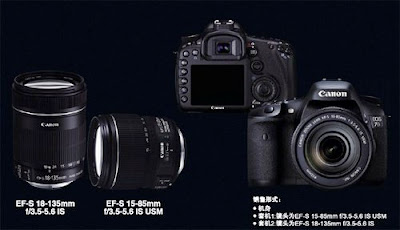
it looks like the floodgates are open. The exact price and release date are still not available.
It'll have a 18MP sensor, dual DIGIC 4 processors, ISO from 100 to 6400 (and some crazy 12800 mode), a 3-inch LCD in addition to the 100% coverage viewfinder and of course HD video capabilities like its siblings. It looks like it'll compete most directly with the king of prosumer DSLRs, the Nikon D300s. Past rumors have suggested it'll cost around $2700, but we'll wait and see: We wouldn't be surprised if it was actually a lot less.
What to expect from Canon EOS 7D:
(direct translation from the posted description in Chinese Mandarin)
Approximately 18 Megapixel, APS-C CMOS Sensor (1.6x crop factor)
Dual Digic 4 with 14-bit Image Processing
Approximately 8fps (94 JPEG fine/15 RAW) burst buffer
All-new eight-directional double cross central AF point, total 19 cross AF points
ISO 100-6400 (Extendable to ISO 12800)
All-new 100% 1.0X magnification Viewfinder with three-dimensional electronic level display (yes!!!)
All-new iFCL intelligent metering system (calculates highlight & color)
3.0″, 920K dots, 160 degrees of viewing angle with anti-glare High Resolution LCD display type II
Full HD capability, external stereo mic input & HDMI output
Live View with Face Priority AF
New Video/Live View button switch
Aero Dynamic Body Design, metal characteristic shutter sound up to 150.000 cycle
All-new 24mm built-in flash with EOS Intelligent Speedlite System (finally!!!!)
Highlight Priority Mode
Lens Vignette Control
More Picture Style
EOS Integrated Dust Reduction System
by D.DELGADO
by D.DELGADO


To celebrate the MINI's 50th birthday since on 26 August 1959. BMW today has unveiled their MINI Coupe Concept. Powered by a 1.6-litre twin-scroll turbocharged engine. Maximum output is 155 kW/211 hp, peak torque 260 Newton-metres/192 lb-ft increasing through the Overboost function for a short while to an even more substantial 280 Newton-metres/206 lb-ft. Unlike the original coupe of the Sixties that simply had a fastback replacement for the standard square-back roof, the new MINI Coupe Concept completely replaces everything from the beltline up.
by D.DELGADO
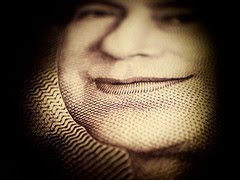
I'll admit, Super Macro Your Cell Phone Camera With A DVD Lens is one weird title.
However, if you just moved to a blu ray DVD player and you're looking for some good use for your old DVD, cnflikt (who also took the shots for this tutorial) came up with a hack to enable you to take super macro shots with your cellphone. Of course you'll need a camera phone for that. cnflikt uses the notorious, yet old-skooled K800i, but any camera phone will work here.
1. Lensectomy Your old DVD Player
First thing is to get a lens for your camera phone. Make sure your old DVD player is not connected to power. Then take the screws off. This is a great way to void your warranty. It is also dangerous and you should really never do this.
Anyhow, if you went against my advice, you'll find the lens under the place where the disk goes. Take it out.
2. Prepare A Lens Mount
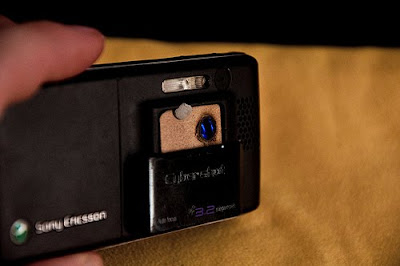
Ok, I'm only kidding on this one. You don't really need a lens mount, you can use duct tape if you wanna go really ghetto or mount it on some cardboard.
If you opt for the cardboard option, just make a round hole in the cardboard.
3. Mount Your Lens

Just use some duct tape (as indicated before) to mount your lens directly, use or blue Tack to hold the card mount.
4. Macro Away


by D.DELGADO
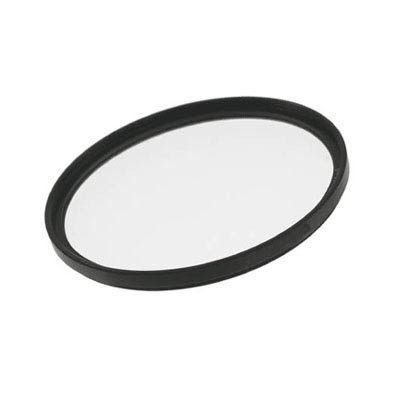
Filters have been around for almost as long as cameras. Not only are there many types of filters, there are potentially unfamiliar terms and naming to go with them. Those that are new to filtering may find the options confusing. Hopefully I can help alleviate some of the confusion.
Filter Systems
There are basically two common types of filter systems, each with their own advantages. The round threaded filters, being the most common, come in many sizes so they can easily attach to a lens. Step-up or step-down ring attachments will allow a lens to use a filter of differing sizes. Round threaded filters may turn, but are limited in the adjustments they can make. Additionally these filters typically have front and rear threads to stack filters. When doing so, vignetting (the darkening of the corners in an image) may occur. Modular slot-in filtering systems alleviate the size and vignetting issues. Since slot in filters come in large squares, the filter holder will require an attachment to fit to a lens permitting each filter to potentially be used for every lens in your camera bag. Since the filters are slid into place, setting certain filters in place can move the point of impact on a graduated or split filter. Plus, vignetting ceases to be a concern with these filters since they are larger than the front lens element, even when stacking. There is no reason to avoid either system all together, although the slot-in system tends to be more versatile. One can easily make a case for one or the other, and even a mixture of both.
Are Filters Necessary?
Filters are chosen for how they interact with light, and therefore how they affect the image taken. In some cases, filters are more important when shooting with film than they are when shooting digital. An FL-D filter is used to correct the greenish tint from fluorescent lighting when shooting on film. A simple white balance setting on modern digital cameras makes an FL-D filter as well as warming and cooling filters obsolete. Tinting filters can also be added and adjusted in software like Adobe Photoshop. A single image can be tinted in many ways and with greater control, making the filter potentially less desirable. Additionally adding a filter to the front of a lens will reduce image quality, even though the reduction isn't always noticeable. However there are certain filters that cannot be reproduced in the camera or by using software. Polarizing and neutral density filters cannot be easily reproduced using software if at all. Getting the shot right in the camera can save a lot of time spent in front of a monitor as well. For this reason, filters are still needed. We just don't need as many as we did with film cameras.
Filter Naming
Even though filters are not as important in digital photography, Photoshop uses established filter naming conventions. The filter's name indicates the type of filter it is, as well as indicating strength when options are available. A Skylight 1B filter is stronger/more effective than a Skylight 1A. A 0.6 Neutral Density filter is stronger/more effective than a 0.3 ND filter. A list of filters with their names and purposes can be found at
Filter Manufacturing Terms
Filter manufacturers use some terms like multi-coated that may confuse buyers. Multi-coated indicates the manufacturing process. HMC and MRC are brand specific terms indicating a multi-coated process as well. In theory, more coatings translate into a better more effective filter. The coatings may be for differing purposes too. For example the base coat may achieve the filter's intended purpose, another coat may be added to reduce reflections or ghosting, and a top protective coating may be added for cleaning without damaging the coats underneath. With digital photography, digital multi-coated filters are becoming available. This just means the filter has been coated to work best with a digital camera. This doesn't mean a non-digital multi-coated filter won't be effective on a digital camera though.
by D.DELGADO

A seller on eBay is selling Canon EOS 5D Mark II Cameras for around $100. So you’re probably asking, what’s the catch? Why would they be selling a $3000 camera for such a cheap price? Because it’s not a camera! It’s a Canon EOS 5D Mark II SHAPED USB flash drive. This drive can hold 4 GB of data and was originally released for the Hong Kong Canon Club.
So $100 is a lot for a 4GB drive but the level of detail and craftmanship on this looks to be pretty good. It looks like a high quality miniature Canon. I suspect that the sellers are hoping that a buyer thinks it’s really a camera and not just a realistic looking tiny reproduction flash drive.
I SOOOOOOO WANT ONE!
by D.DELGADO
by D.DELGADO

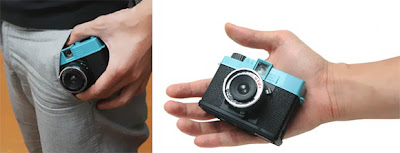
The Lomography Diana Mini($TBA) is so cute! Lomography has just lauched this mini Diana camea. The Diana Mini($TBA) features can shoot square format or half-frame pictures using standard 35mm film, so you can shoot 72 shots onto one 35mm film, Cool! And it has a wide - angle lens that gives you the multiple exposure, long exposure capabilities. The samples photos, here.
The Diana Mini is the ultra-compact, petite version of the Diana F+ camera. This little queen of convenience allows you to shoot square format or half-frame pictures using standard 35mm film thats 72 rectangular half-frames or 36 square images on one roll! To further enhance creative possibilities, weve thrown in Multiple Exposure and Long Exposure features, a tripod mount, and a cable release attachment a first for the Diana!
• Pocket-sized and ultra-compact
• Uses convenient 35mm film and standard development
• Allows you to shoot 72 rectangular half-frames or 36 square pictures on one 35mm roll!
• Multiple exposure, long exposure capabilities
• Tripod thread and cable release attachment available
Diana Mini Starter Kit does not include the Diana+ Flash, but offers full compatibility
by D.DELGADO

Specification Highlights
10mp High Sensitivity CCD
3.75x Zoom (28-105)
Fast f/2.0-4.9 Lens
Dual Anti-Noise System
3″ LCD
ISO 3200
DIGIC IV
New Feature Lens Control Ring
Press Release
Today Canon announces the PowerShot S90 – marking the return of the Canon PowerShot S-series. The PowerShot S90 continues the PowerShot S-series tradition with impressive, fully manual features that deliver excellent image quality and user experience, including:
Canon’s Dual Anti-Noise System with an f/2.0 wide-angle lens, a 3.0 inch, PureColor II LCD display and an intuitive new lens Control Ring.
Exceptional image quality in all conditions
The PowerShot S90 features Canon’s Dual Anti-Noise System, combining a high sensitivity 10.0 Megapixel image sensor with Canon’s enhanced DIGIC 4 image processor. Photographers can capture full resolution images – even in tricky lighting conditions – with the Dual Anti-Noise System taking maximum advantage of the available light, while substantially reducing image noise.
This is particularly useful in low-light portrait and landscape photography, where users are able to shoot high quality full resolution images even at ISO 3200. DIGIC 4 also includes an enhanced version of i-Contrast: Canon’s Intelligent Contrast Correction technology, which delivers a wider dynamic range to reduce high-light blowout while retaining low-light detail.
The f/2.0 Advantage
Canon has fitted the PowerShot S90 with a wide aperture f/2.0 wide-angle lens to help photographers take full advantage of the Dual Anti-Noise System. The f/2.0 wide-angle lens allows twice as much light into the camera as an f/2.8 lens, enabling photographers to use faster shutter speeds to reduce blur or achieve a shallower depth of field.
The camera also includes Canon’s optical Image Stabilizer (IS) technology, which uses a lens-shift system to minimise camera shake and image blur – effectively giving photographers a 4-stop advantage over less capable cameras.
To help users capture the perfect shot, the PowerShot S90 includes a 3.0 inch LCD display, which features Canon’s PureColor II LCD technology. It enables users to frame and review images easily thanks to an exceptionally wide viewing angle, 461k dot resolution and great colour rendition.
Sophisticated performance, sensational ease of use
As befits a camera of this calibre, the PowerShot S90 features a wide range of powerful manual and automatic controls that give photographers creative freedom.
The PowerShot S90 features an intuitive lens Control Ring, which enables users to adjust the settings of various functions by twisting the selector at the base of the lens barrel to the left or right. The Control Ring can be used as a quasi-manual zoom offering a closer view of subjects in 28mm, 35mm, 50mm, 85mm and 105mm steps.
Additional settings can be assigned, such as ISO (in 1/3 stop increments), shutter, aperture, focus and exposure compensation – giving photographers a satisfyingly tactile experience. The Control Ring also helps enhance user interaction with the camera by offering fast, accurate scrolling through menus, functions and images. In new Nostalgic Mode the Control Ring can also be used to add an aged effect to the shot, from a subtle faded look to full grainy black and white.
Smarter Scene Detection
For more creative control, users can also choose from a variety of Scene Modes (SCN on the Control dial) that enable them to choose the best settings for particular shooting situations – ideal for creative effects or when shooting in difficult lighting. A new Low Light mode can help users capture reduced resolution 2.5 Megapixel images in very dim light at ISO speeds of up to ISO 12800 and at a fast 2.4 frames per second.
Photographers can also choose from a range of creative modes including Aperture priority AE, Shutter priority AE, Program AE, Manual and Custom modes. Choosing and using different camera settings is now even easier thanks to an improved menu navigation system, which includes ‘Hints & Tips’ on most settings and features.
The PowerShot S90 allows fine custom adjustment of the camera’s white balance settings – enabling compensation of different kinds of tungsten, fluorescent and other light conditions for perfect results every time.
For quick and easy snaps, the PowerShot S90 includes Smart Auto with Scene Detection Technology. This selects the scene type from 22 variables, applying the best settings for optimum output – a great asset to those who love to point-and-shoot without worrying about the technical details. Smart Auto now measures movement of objects or people in a scene, activating Servo AF/AE to ensure that the focus and exposure are locked onto a subject.
In addition, the PowerShot S90 offers RAW format shooting and support for Canon’s Digital Photo Professional (DPP) software, making it easy to integrate the camera into a user’s digital workflow. Users will also find it easy to share images captured on the camera with family and friends, thanks to an HDMI mini port, which enables the camera to be connected to a compatible TV using an optional cable.
With a strong heritage and impressive range of features the PowerShot S90 is the ideal compact camera for technology and photographic enthusiasts alike
by D.DELGADO

Specification High Lights
10mp High Sensitivity CCD
5x Zoom (28-140)
DIGIC IV
2.8″ Vari-Angle LCD
RAW
ISO3200 (Upto ISO 12,500)
$499 USD
Press Release
Canon today announces the launch of the feature packed PowerShot G11, the successor to the multi award-winning PowerShot G10 – the favourite compact of professional photographers and photoagencies the world over.
Commenting on his use of the predecessor to the PowerShot G11, the PowerShot G10, Gary Knight, acclaimed photojournalist and co-founder of the VII Photo Agency, said: “As a photojournalist who covers warzones, one of the main challenges I face is getting high quality images in hostile environments.
To achieve this I need a camera that offers great image and build quality without the bulk, and the PowerShot G series is perfect for this purpose. When shooting in areas of conflict, it’s important to have a compact camera in my bag that allows me to work discreetly but also provides the level of quality required to get the photos I need. The G Series excels in this respect, delivering great quality images from a compact body that is less intimidating than that of an SLR.”
Professional photographers will benefit from the G11’s greatly expanded dynamic range. Canon’s new Dual Anti-Noise System combines a high sensitivity 10.0 Megapixel image sensor with Canon’s enhanced DIGIC 4 image processing technology to increase image quality and greatly improve noise performance by up to 2 stops (compared to PowerShot G10). The PowerShot G11 also includes i-Contrast technology, which prevents high-light blowout whilst retaining low-light detail – ideal for difficult lighting situations.
The premium quality Canon lens delivers picture-perfect performance, offering a 5x wide angle (28mm) zoom with optical Image Stabilizer (IS). This allows handheld shots to be taken at much slower shutter speeds (4-stops) than conventional non-IS models – allowing perfect shooting in darker conditions or at a lower ISO. Greatly reducing blur caused by camera shake, photographers can shoot at longer focal lengths and in lower light conditions without the need for a tripod.
The digital compact includes the ability to shoot in RAW format and is compatible with Canon’s Digital Photo Professional (DPP) software, ensuring that photo shoots can be easily integrated into a photographer’s workflow.
Stephen Munday, Senior Operations Director, Editorial, Getty Images, comments: “The quality of images delivered by the PowerShot G series are so good that we use G10 images within our editorial library, and our photographers using the G series models do so because of the image quality and flexibility they provide.”
He continues, “The unpredictable nature of news photojournalism requires our photographers to get shots in all kinds of situations, and the size of the G10 allows them to do that without drawing too much attention to themselves. The low-light capabilities of the new G11 will be of even greater help in that respect, as it will allow our photographers to shoot high quality images without flash in even more situations.”
Alongside superb image quality, the compact size of the PowerShot G11 and a 2.8-inch vari-angle PureColor II VA LCD (461k dots) make it the ideal choice for professional photographers to use where an SLR is impractical or obtrusive. The G11 is ergonomically designed for faster, accurate menu scrolling. Analogue style dials for ISO and exposure compensation give photographers instant, familiar access to common settings and features.
“I’ve been a user of the G series since the G5” says Edmond Terakopian, photojournalist and winner of the British Press Awards Photographer of the Year and a World Press Photo award for Spot News. “Recently I’ve been using the G10 which is absolutely spot on; image quality, usability, reliability and build quality are all excellent. It’s the one camera that’s always with me, no matter where I am; whether on or off duty. I know I can rely on it to help me get the picture, no matter what.
Over the years I’ve used my G Series cameras on the occasions when assignments have needed discretion. It’s a satisfying feeling telling a picture editor that the photograph he’s just complemented was from a compact camera.”
The G11 is equipped to deal with any light condition. Low Light mode enables photographers to shoot up to ISO 12,800 in reduced 2.5MP resolution at 2.4fps capturing brilliant shots indoors without the need for a flash, whilst a built-in Neutral Density (ND) filter decreases light levels by 3 stops allowing creative control in bright conditions.
The camera’s highest flash synchro speed has been increased to 1/2000th seconds, reducing the possibility of overexposed bright scenes. A real time histogram displays brightness levels on the PureColor II VA LCD screen, so photographers can easily view conditions and change settings when shooting.
The PowerShot G11 gives photographers the freedom to perfectly shoot fast-paced action. Quick Shot mode takes images almost instantly after pressing the shutter, so fast moving objects are always captured, whilst Servo AF/ AE continuously adjusts focus and exposure to optimise settings when photographing moving subjects.
The PowerShot G11 can be used with a wide range of Canon accessories, including the Speedlite 270EX, 430EX II and 580EX II; Macro Twin Lite MT-24EX and Macro Ring Lite MR-14EX flashes for enhanced shooting options; the Speedlite Transmitter ST-E2, Speedlite Bracket BKT-DC1 and Remote Switch RS-60E3. Underwater photographers can even team the PowerShot G11 with the specially designed Waterproof Case WP-DC34 – an underwater housing allowing full control of the camera at depths down to 40m. The PowerShot G11 includes an HDMI port so users can review images on a full HD screen via an optional HDMI cable
Subscribe to:
Posts (Atom)


